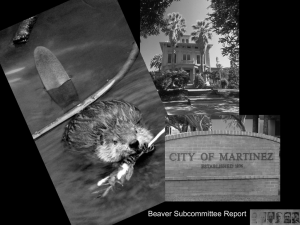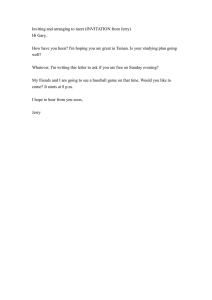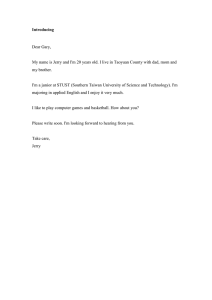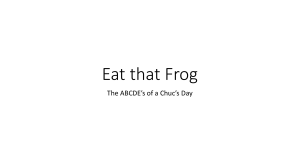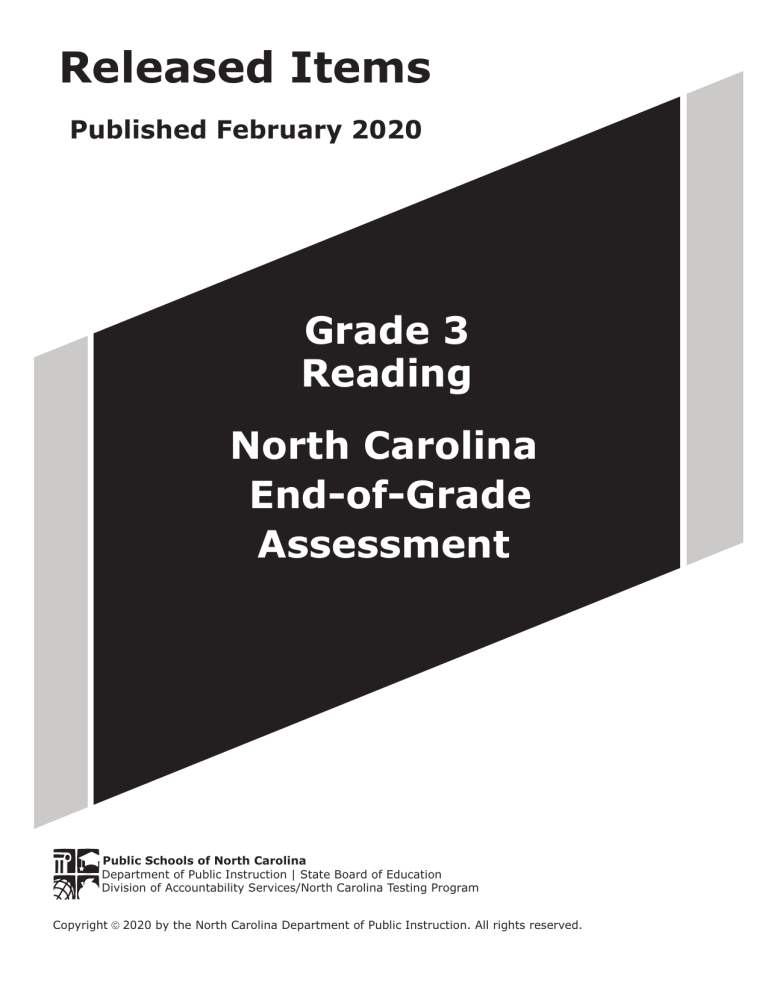
Released Items Published February 2020 Grade 3 Reading North Carolina End-of-Grade Assessment Public Schools of North Carolina Department of Public Instruction | State Board of Education Division of Accountability Services/North Carolina Testing Program Copyright ã 2020 by the North Carolina Department of Public Instruction. All rights reserved. GRADE 3 READING—RELEASED ITEMS Sample Questions Octopus B harmful C proud D brave SE fearful EA A EL S2 What does shy mean in the text? How many hearts does an octopus have? A one B three C five D eight R S1 D The octopus is a sea animal. It has an interesting body. First, it has three hearts. The heart is often seen as a symbol of love. That’s a lot of love! An octopus also has eight limbs. Some people call them arms or tentacles. Eight arms could give a lot of hugs, but the octopus is a very shy animal. If an octopus is scared, it will squirt ink and swim away. 1 GRADE 3 READING—RELEASED ITEMS The Great Escape (Part 1) by Susan Mitsch 3 poked B ran from C marched to D tossed SE D A A side B fence C lock D bottom EA What is the meaning of latch in paragraph 2? EL 2 What is the meaning of pecked in paragraph 2? What did Rhode Island Red do after he got out of his cage? R 1 A He rode with the animals on the roller coaster. B He put all of the animals in their cages. C He chased the animals to the midway. D He let the other animals out of their cages. 2 Go to the next page. GRADE 3 READING—RELEASED ITEMS The Great Escape (Part 2) by Susan Mitsch He chased after each one to get them to run into their cages. B He shook a pail of oats while yelling at the animals to get back in their cages. C He dropped a trail of oats behind him so the animals would follow him to their cages. D He grabbed Rhode Island Red first and then scared all the other animals to their cages. SE D A EA Which word describes the boy in the text? A clever B scared C unusual D useless EL 5 How did the boy get all the animals back in their cages? R 4 3 Go to the next page. GRADE 3 READING—RELEASED ITEMS Use both parts of this text to answer this question. Why is Rhode Island Red so pleased with himself at the end of the text? A He gets the boy to feed all the animals and let them out of their cages. B He gets all the animals back into their cages without anyone else’s help. C He is happy to be in his cage with a long drink and some food. D He is happy that he let the animals out of their cages so they could have some fun. D 6 What is one way that Rhode Island Red and the boy are alike? They both lead the animals. B They both chase the animals. C They both feed the animals. D They both catch the animals. EA A EL 7 SE Use both parts of this text to answer this question. Use both parts of this text to answer this question. Which statement from the text shows that Rhode Island Red is proud? R 8 A “And in the middle of the poultry tent sat Rhode Island Red, the rooster.” B “One morning, Red pecked at the latch on his cage.” C “Rhode Island Red headed straight for the goose tent.” D “But Rhode Island Red just drank a long drink, fluffed up his feathers, and crowed, ‘R-r-r-r-roooo!’ ” 4 Go to the next page. GRADE 3 READING—RELEASED ITEMS Excerpt from Under My Nose (Part 1) by Lois Ehlert changed B started C finished D used SE D A A drawing pictures B creating a title C getting started D reading a book EA According to the text, what is often difficult for the author? EL 10 What is the meaning of inspired in paragraph 4? R 9 5 Go to the next page. GRADE 3 READING—RELEASED ITEMS A lesson B picture C report D story The bell warns the birds. B The bell makes a nice sound. C The bell is pretty. D The bell is interesting. EA SE A D According to the text, why does the cat have a bell on its collar? EL 12 What is the meaning of portrait in paragraph 6? R 11 6 Go to the next page. GRADE 3 READING—RELEASED ITEMS Excerpt from Under My Nose (Part 2) by Lois Ehlert 15 by contrasting two different styles for writing books B by giving a step-by-step process for publishing a book C by comparing the writing steps for two kinds of books D by giving a chronological order for beginning a book SE D A How does the author connect the ideas in paragraphs 12 and 13? by listing important events that have occurred in the author’s life B by explaining the different parts of the book that have to be made C by describing how the author gets ideas when they just will not come D by comparing the rhythm of the text when read aloud to how it looks on paper EA A EL 14 How does the author connect the writing steps in paragraphs 10 and 11? What is the meaning of the phrase “right under your nose” in paragraph 16? R 13 A inside a person B on a person’s face C read by a person D in front of a person 7 Go to the next page. GRADE 3 READING—RELEASED ITEMS Use both parts of this text to answer this question. Which statement by the author supports the main idea? “The books I made needed text, so I began writing words to go with my art.” B “Getting a good idea for a book is the hardest thing for me, but also the most fun.” C “I like to write out rough story ideas for my books, then make thumbnail sketches.” D “I like to read the text out loud and listen to the rhythm of the words.” EL EA SE D A R 16 8 Go to the next page. GRADE 3 READING—RELEASED ITEMS The text below is divided into two parts. After each part are questions you will need to answer. Adapted from The Adventures of Grandfather Frog: “Billy Mink Finds Little Joe Otter” (Part 1) by Thornton W. Burgess Billy Mink ran around the edge of the Smiling Pool and turned down by the Laughing Brook. His eyes twinkled with mischief, and he hurried as only Billy can. As he passed Jerry Muskrat’s house, Jerry saw him. D “Hi, Billy Mink! Where are you going in such a hurry this fine morning?” he called. SE “To find Little Joe Otter. Have you seen him?” replied Billy. “No,” said Jerry. “He’s probably down to the Big River fishing. I heard him say last night that he was going.” EA “Thanks,” said Billy Mink, and without waiting to say more he was off like a little brown flash. EL Jerry watched him out of sight. “Hump!” exclaimed Jerry. “Billy Mink is in a terrible hurry this morning. Now I wonder what he is so anxious to find Little Joe Otter for. When they get their heads together, it is usually for some mischief.” R Jerry climbed to the top of his house and looked over the Smiling Pool in the direction from which Billy Mink had just come. Almost at once he saw Grandfather Frog fast asleep on his big green lily pad. The legs of a foolish green fly were sticking out of one corner of his big mouth. Jerry couldn’t help laughing, for Grandfather Frog certainly did look funny. “He’s had a good breakfast this morning, and his full stomach has made him sleepy,” thought Jerry. “But he’s getting careless in his old age. He certainly is getting careless. The idea of going to sleep right out in plain sight like that!” Suddenly a new thought popped into his head. “Billy Mink saw him, and that is why he is so anxious to find Little Joe Otter. He is planning to play some trick on Grandfather Frog as sure as pollywogs have tails!” exclaimed Jerry. Then his eyes began to twinkle as he added: “I think I’ll have some fun myself.” 9 Go to the next page. GRADE 3 READING—RELEASED ITEMS He was looking for Grandfather Frog. B He was getting careless in his old age. C He was going to eat breakfast. D He was looking for Little Joe Otter. A He was hot. B He is old. C He had just eaten. D He had been sick. SE D Why was Grandfather Frog sleeping? EA 19 A Why does Jerry laugh when he sees Grandfather Frog? A Grandfather Frog is jumping on the lily pads. B Grandfather Frog has part of a fly sticking out of his mouth. C Grandfather Frog has singing lessons after breakfast with his friends. D Grandfather Frog is dancing because he is happy to see Jerry. EL 18 Why was Billy in a hurry? R 17 10 Go to the next page. GRADE 3 READING—RELEASED ITEMS Adapted from The Adventures of Grandfather Frog: “Billy Mink Finds Little Joe Otter” (Part 2) by Thornton W. Burgess D Without another word Jerry slipped down into the water and swam over to the big green lily pad of Grandfather Frog. Then he pounded the water loudly with his tail. Grandfather Frog’s big goggly eyes flew open, and he was just about to make a frightened plunge into the Smiling Pool when he saw Jerry. “Have a nice nap?” inquired Jerry, with a broad grin. SE “I wasn’t asleep!” protested Grandfather Frog indignantly.* “I was just thinking.” “Don’t you think it a rather dangerous plan to think so long with your eyes closed?” asked Jerry. EA “Well, maybe I did just doze off,” admitted Grandfather Frog sheepishly. EL “Maybe you did,” replied Jerry. “Now listen.” Then Jerry whispered in Grandfather Frog’s ear, and both chuckled as if they were enjoying some joke, for they are great friends, you know. Afterward Jerry swam back to his house, and Grandfather Frog closed his eyes so as to look just as he did when he was asleep. R Meanwhile Billy Mink had hurried down the Laughing Brook. Halfway to the Big River he met Little Joe Otter bringing home a big fish, for you know Little Joe is a great fisherman. Billy Mink hastened to tell him how Grandfather Frog had fallen fast asleep on his big green lily pad. “It’s a splendid chance to have some fun with Grandfather Frog and give him a great scare,” concluded Billy. Little Joe Otter put his fish down and grinned. He likes to play pranks almost as well as he likes to go fishing. “What can we do?” said he. * indignantly: angrily 11 Go to the next page. GRADE 3 READING—RELEASED ITEMS “I’ve thought of a plan,” replied Billy. “Do you happen to know where we can find Longlegs the Blue Heron?” “Yes,” said Little Joe. “I saw him fishing not five minutes ago.” Then Billy told Little Joe his plan, and laughing and giggling, the two little scamps hurried off to find Longlegs the Blue Heron. 22 floated C attacked D entered D B SE crashed EA A Why did Grandfather Frog close his eyes to look just as he did when he was asleep? EL 21 What is the meaning of the word slipped in paragraph 10? A to play a joke on Billy B to get back to his nap C to be a friend to Jerry D to finish eating the fly R 20 What is the meaning of splendid in paragraph 17? A fast B great C safe D usual 12 Go to the next page. GRADE 3 READING—RELEASED ITEMS Use both parts of this text to answer this question. Which detail from the text supports that Grandfather Frog was scared when Jerry pounded the water with his tail? A “ ‘The idea of going to sleep right out in plain sight like that!’ ” B “He was just about to make a frightened plunge into the Smiling Pool when he saw Jerry.” C “ ‘I wasn’t asleep!’ protested Grandfather Frog indignantly.” D “ ‘Don’t you think it a rather dangerous plan to think so long with your eyes closed?’ asked Jerry.” SE D 23 Use both parts of this text to answer this question. How does Jerry’s climb to the top of his house contribute to the rest of the text? He realizes that he wants to take a nap. B He knows that he wants to go fishing. C He knows where to find Longlegs the Blue Heron. D He realizes why Billy Mink is in such a hurry. EL EA A R 24 13 Go to the next page. GRADE 3 READING—RELEASED ITEMS The text below is divided into two parts. After each part are questions you will need to answer. Adapted from “Beavers at Home” (Part 1) by James Baldwin D A beaver is a wild animal about three feet in length, and weighing forty or fifty pounds. It is covered with fine, glossy, grayish brown fur. Its tail is nearly a foot long, and has no hair at all, but only little scales, something like those of a fish. When the beaver is swimming about in the water it uses its tail as a kind of rudder.1 SE A beaver cannot bear to live alone. He is never as happy as when he has a large number of friends close at hand whom he can visit every day; for beavers are the best and kindest neighbors in the world, always ready to help one another in building new houses or in repairing old ones. EA Of course the first thing to be done when one is going to build a house or a village is to find a good place for it; and the spot which every beaver of sense thinks is best is either a large pond, or, if no pond is to be had, a low plain with a stream running through it. For on such a plain, a pond can be made by causing the water to cover it. R EL It must be a very, very long time since beavers first learned that the way to make a pond is to build a dam across a running stream. To begin with, they must know which way the stream runs, and in this they never make a mistake. They first gather together a number of sticks and logs about five feet long, which they carry or roll into the stream. While some of the beavers are doing this—for the safety of the village lies in the strength of the foundation2—others are gathering and piling up many green branches of trees. These branches, which they have cut from the trees with their teeth, are piled among the sticks and logs, and soon a dam is formed that reaches across the stream. 1 2 rudder: a tool used as a guide foundation: the lowest level when building 14 Go to the next page. GRADE 3 READING—RELEASED ITEMS When the foundation of the dam has been finished, the beavers pile stones and mud upon it until they have built a wall ten or twelve feet thick at the bottom and two or three feet thick at the top. After all this has been done, the older and wiser beavers go carefully over every part to see if the dam is of the right shape and is strong and safe; for beavers do not like poor work, and they know that a weak dam is easily washed away. It is three feet long and weighs forty or fifty pounds. B It has small scales similar to those of a fish. C It is covered with shiny, brown fur. D It looks like a hairy rudder on a boat. EA A EL 26 According to the text, which choice describes a beaver’s tail? What is the meaning of the word bear in paragraph 2? R 25 SE D When the dam has been finished and the pond made, the beavers begin to think about their houses. As they like to have their rooms dry, they raise the floors of their houses some distance above the water, so that when the stream rises during the rainy season they will not be flooded. A accept B carry C uncover D earn 15 Go to the next page. GRADE 3 READING—RELEASED ITEMS gathering sticks and logs B piling stones and mud on top C watching which way the stream runs D checking to see if it is strong and safe D What is the connection between paragraphs 5 and 6? They present a problem and offer a solution. B They explain a cause-effect relationship. C They present a sequence for building. D They compare habits of wise beavers. SE A EA 29 A Why do beavers carefully inspect a dam after building it? EL 28 According to the text, what step follows finishing the foundation when building a beaver dam? A Beavers need to build a bridge to get across the stream. B Beavers know that water will wash away a weak dam. C Beavers want to find the best place to build a house or village. D Beavers make the walls of their houses with big sticks. R 27 16 Go to the next page. GRADE 3 READING—RELEASED ITEMS Adapted from “Beavers at Home” (Part 2) by James Baldwin D Beavers are always quite clear in their minds as to what they want, and how to get it, and they like to keep things separate. When they are in the water, they are as happy as they can be; but when they are out of it, they like to be dry. It is sometimes two or three months before the village is finished. But the little round huts are to be used only for winter homes; for during the summer no beaver would think of sleeping indoors or, indeed, of staying very long in the same place. EL EA SE Everything that a beaver does is well done. The walls of his house are thick and strong, and when he has a large family or many friends to stay with him the house has several rooms in it. No beaver ever thinks of living alone. Sometimes he will have one companion, and sometimes a dozen or more. But however full the house may be, everything is kept in good order. Each beaver has his fixed place on the floor, which is covered with dry leaves and grass. A door is always kept open into the place where their food is kept, and so they never go hungry. There they stay all through the winter eating the bark and tender shoots of young trees which they have carefully stored away, sleeping through the cold stormy weather, and at last getting very fat. R At one time there were many beavers in the West and the South, but now there are very few to be found there. Many years ago a Frenchman who was traveling in Louisiana spent a good deal of time watching beavers and learning about their ways. He hid himself close to a dam which the little creatures had built, and in the night he cut a hole about a foot wide right through it. He had made no noise while cutting through the dam, but the rush of the water awakened one beaver who was not sleeping as soundly as the others. This beaver left his hut quickly, and swam to the dam to see what was wrong. As soon as he saw the stream that had been dug, he struck four loud blows with his tail, and every beaver in the village left his bed and rushed out in answer to the call. When they reached the dam and saw the large hole in it, they held a meeting as to what they should do. Then the head beaver gave orders to the rest, and all went to the bank to get sticks and mud. 17 Go to the next page. GRADE 3 READING—RELEASED ITEMS When they had gathered together as much as they could carry, they formed in line and marched with their loads to the dam. The sticks were thrown into the hole and mud and stones were packed upon them. The beavers worked hard and wisely, and in a short time the dam was as good as ever. Then one of the older beavers struck two blows with his tail, and in a few minutes all were in bed and asleep again. enemy C worker D friend D B SE sister EA A How are paragraphs 10 and 11 connected? A Both compare the two ways that beavers build dams. B Both describe the differences between a dam and a pond. C Paragraph 10 presents a problem, and paragraph 11 describes a solution. D Paragraph 10 shows a result of the unusual situation in paragraph 11. R 31 What does the word companion mean in paragraph 9? EL 30 Use both parts of this text to answer this question. 32 Which detail from the text supports the main idea? A “A beaver is a wild animal about three feet in length.” B “They first gather together a number of sticks and logs.” C “No beaver ever thinks of living alone.” D “Each beaver has his fixed place on the floor.” 18 Go to the next page. GRADE 3 READING—RELEASED ITEMS Excerpt from “Dog a Hero on Mount Hood” (Part 1) by Susan Jankowski 35 B important C practiced D expected D eager SE A Why did the rock climbers end their climb early? The weather was bad. B The group was bored. C The dog was tired. D The dog was sick. EA A EL 34 What is the meaning of experienced in paragraph 2? According to the text, what caused the climbers to fall down the mountain? R 33 A They were very tired. B The mountain was rocky. C It was getting dark. D The mountain was slippery. 19 Go to the next page. GRADE 3 READING—RELEASED ITEMS A The information in paragraph 6 is a result of the action in paragraph 5. B The ideas in paragraphs 5 and 6 compare the different climbers. C Paragraphs 5 and 6 describe the path the climbers took. D Paragraph 5 lists the steps needed for paragraph 6. to look at an idea one believes in B to admit that something is true C to escape from danger D to learn something new EA SE A D What is the meaning of “face the fact” in paragraph 8? EL 37 How does the author connect the point that the climb was very dangerous in paragraphs 5 and 6? R 36 20 Go to the next page. GRADE 3 READING—RELEASED ITEMS Excerpt from “Dog a Hero on Mount Hood” (Part 2) by Susan Jankowski A Both dried the climbers. B Both scared the climbers. C Both calmed the climbers. D Both warmed the climbers. D According to the text, what is the relationship between the climbers petting Velvet’s fur and Velvet licking them? SE 38 Use both parts of this text to answer this question. EA What is the main idea of the text? Mount Hood can be a dangerous place. B Mount Hood is popular for rock climbing. C A dog helps a group of rock climbers. D A group of teachers goes rock climbing. EL A R 39 21 Go to the next page. GRADE 3 READING—RELEASED ITEMS Use both parts of this text to answer this question. Which statement from the text supports the main idea? “They had no idea a German shepherd named Velvet would help save their lives.” B “On Sunday, the weather took a turn for the worse.” C “They hiked for miles to try to make it down the mountainside.” D “The rescue team found the climbers with Velvet in White River Canyon at about 7,400 feet.” EL EA SE D A R 40 22 Go to the next page. GRADE 3 READING—RELEASED ITEMS This is the end of the Reading test. Directions: 1. Look back over your answers for the test questions. 2. Make sure all your answers are entered on the answer sheet. Only what is entered on the answer sheet will be scored. 3. Put all of your papers inside your test book and close your test book. D 4. Stay quietly in your seat until your teacher tells you that testing is finished. R EL EA SE 5. Remember, teachers are not allowed to discuss questions from the test with you, and you are not allowed to discuss with others any of the test questions or information in the test. 23 GRADE 3 READING—RELEASED ITEMS Grade 3 Reading RELEASED Items 2020 Answer Key Standard Item Number Type Key S1 MC A 2 S2 MC B 1 1 MC A 2 RL.3.4 2 MC C 2 RL.3.4 3 MC 4 MC 5 MC 6 MC 7 D 2 RL.3.3 C 1 RL.3.1 A 2 RL.3.3 D RL.3.3 MC A 2 RL.3.3 8 EA 2 MC D 2 RL.3.3 9 MC B 2 RI.3.4 MC C 2 RI.3.1 11 EL SE D DOK* MC B 2 L.3.4 12 MC A 1 RI.3.1 13 MC D 3 RI.3.8 14 MC B 3 RI.3.8 15 MC D 2 L.3.5.a 16 MC B 2 RI.3.2 17 MC D 1 RL.3.1 18 MC C 2 RL.3.1 19 MC B 1 RL.3.1 R 10 24 GRADE 3 READING—RELEASED ITEMS Type Key DOK 20 MC D 2 L.3.4 21 MC A 2 RL.3.3 22 MC B 2 RL.3.4 23 MC B 2 RL.3.3 24 MC D 2 RL.3.3 25 MC B 1 RI.3.1 26 MC A 2 L.3.4 27 MC B 2 RI.3.3 28 MC 29 MC 30 MC 31 MC 32 Standard 3 RI.3.8 B 1 RI.3.3 D 2 RI.3.4 C 3 RI.3.8 MC B 2 RI.3.2 33 MC C 2 RI.3.4 34 MC A 2 RI.3.1 MC 1 RI.3.1 MC A 3 RI.3.8 EL C EA SE D Item Number D 37 MC B 2 L.3.5.a 38 MC C 2 RI.3.3 39 MC C 2 RI.3.2 40 MC A 2 RI.3.2 35 R 36 * DOK: 1 = Recall 2 = Skill/Concept 3 = Strategic Thinking 25 D SE EA EL R ACKNOWLEDGMENTS The North Carolina Department of Public Instruction wishes to express gratitude to the following authors and publishers, whose permission to reprint copyrighted selections has made these tests possible. Every effort has been made to locate the copyright owners of material reprinted in this test booklet. Omissions brought to our attention will be corrected in subsequent editions. “The Great Escape” by Susan Mitsch from Children’s Playmate, July/August 1999. © SEPS. Licensed by Curtis Licensing Indianapolis, IN. Excerpt from Under My Nose by Lois Ehlert. Copyright © 1996 by Lois Ehlert. Reprinted by permission of Richard C. Owen Publishers, Inc. Excerpt from “Dog a Hero on Mount Hood” by Susan Jankowski from True Wilderness Rescue Stories, Copyright © 2011 by Susan Jankowski. All rights reserved. Used with permission of Enslow Publishing, LLC.
